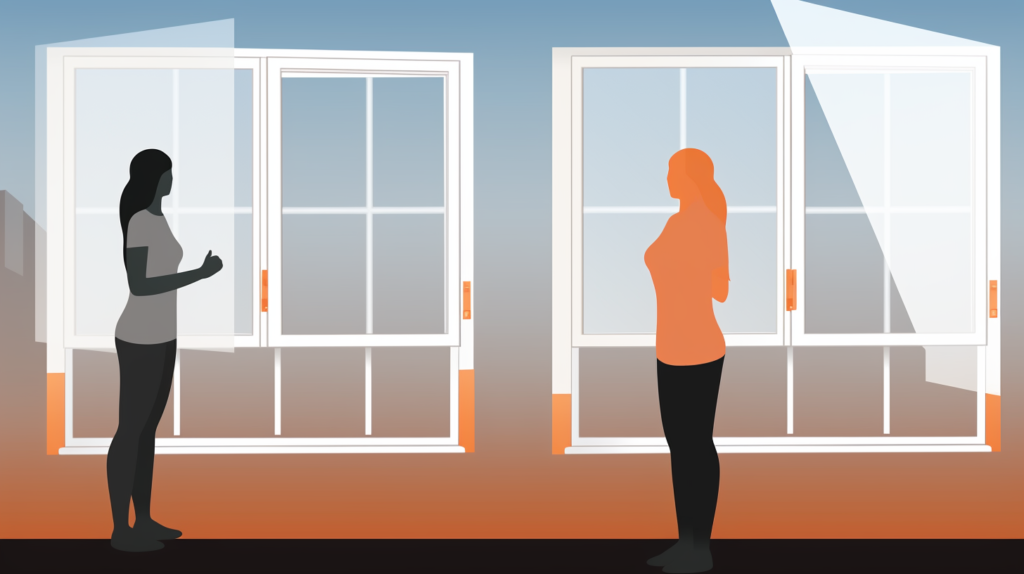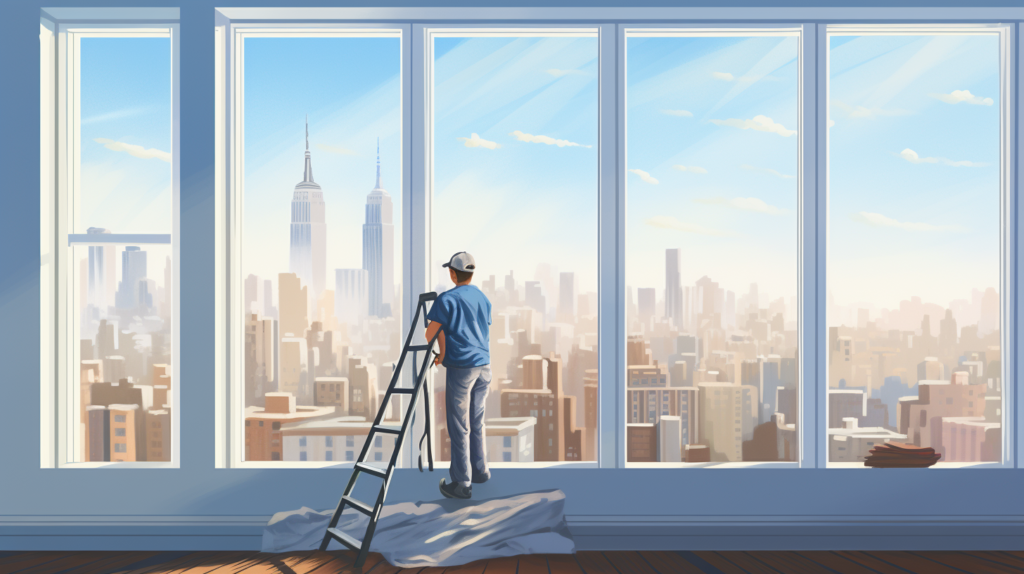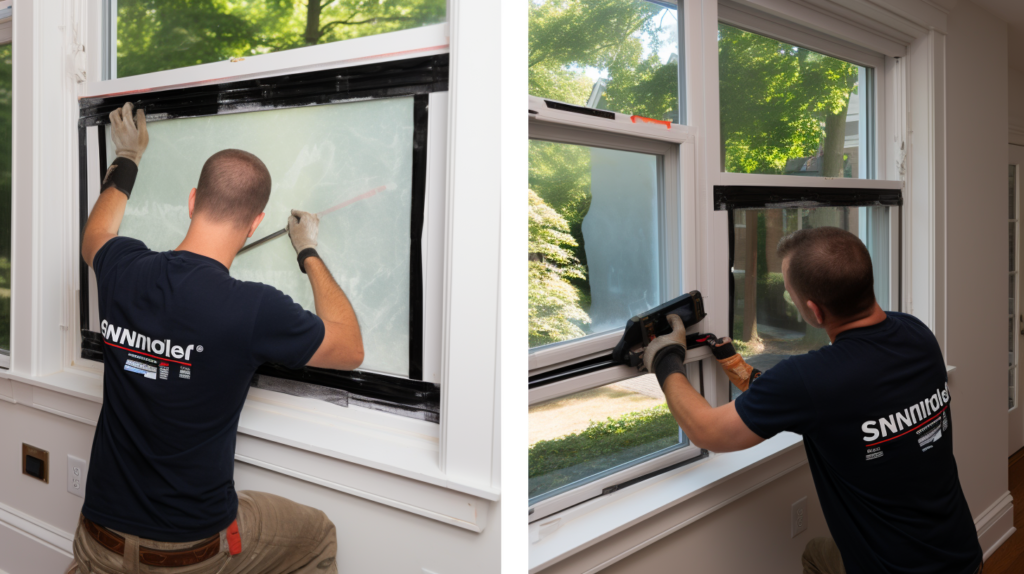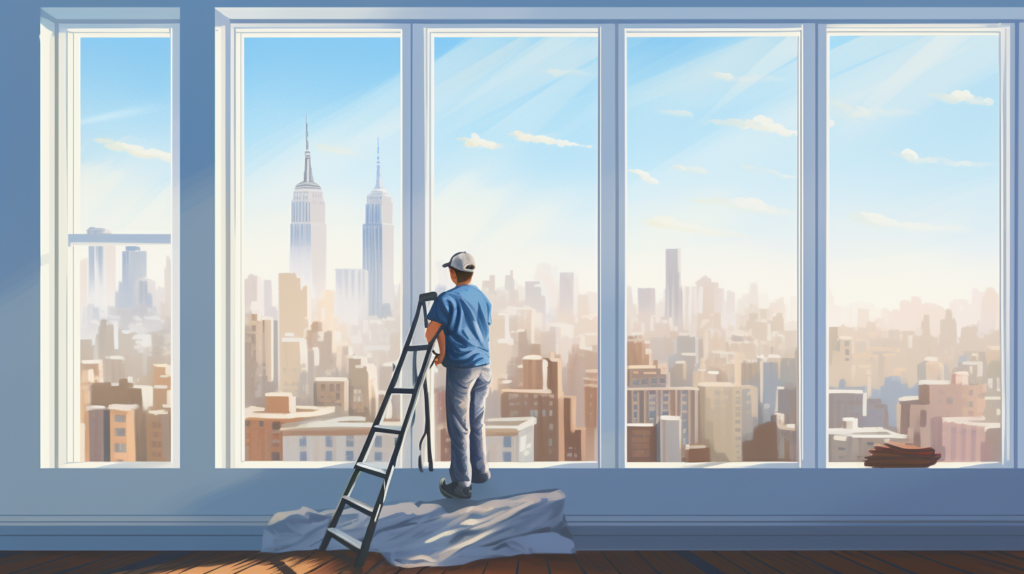Do honking horns, sirens and construction make it impossible to relax in your New York City apartment?
Learning how to soundproof windows in NYC can help tune out the noise and restore some peace.
While the energetic sounds of the city can be exciting, nonstop noise seeping into your home can quickly become disruptive.
Thankfully, there are ways to soundproof windows in NYC to muffle external sounds while retaining privacy and natural light.
With the right window upgrades and techniques, you can create a quieter urban oasis.
Let’s dive into the most effective options for soundproofing windows in a noisy metropolis like New York City.
Why You Should Soundproof Your NYC Windows?

Living in New York City comes with the excitement of a bustling, vibrant urban environment. However, all of that energy also brings a lot of noise.
Traffic, construction, crowds of people, and sirens create a constant din that can make it difficult to relax, concentrate, or sleep.
Soundproofing your windows is an effective way to block out the loud noises from the streets below and create a peaceful oasis in your NYC home.
There are several great reasons to consider soundproofing your windows:
Reducing noise from busy streets, loud vehicles, construction, and crowds of people are the main reasons you may want to soundproof your windows in New York City.
The city is known for its hustle and bustle, but that also creates an environment where disturbing sounds easily travel up to your apartment.
Sirens blaring, trucks rumbling, honking horns, rattling subways, and loud chatter on sidewalks and streets can be annoying to deal with daily.
Soundproof windows help muffle these disruptive noises and let you retain your sanity.
Blocking out disturbing sounds like sirens, honking horns, and subway rattling are some of the key benefits of soundproofing.
These sudden loud noises in an urban area can be jarring and make it hard to relax.
Your home should be a peaceful sanctuary, but with single pane windows, the commotion from the streets permeates the space.
Upgrading to more noise blocking windows prevents these disruptive sounds from invading so you can truly unwind.
Improving sleep, concentration, and overall quality of life is possible with properly soundproofed windows.
Noise pollution has been shown to cause stress, sleep disturbances, reduced productivity, and other health effects.
When loud sounds constantly filter into your home, it can be difficult to get deep, restful sleep. Soundproofing limits these sleep interruptions.
Concentration also suffers when you have to compete with honking and construction clatter outside. Muffling that allows better focus and work.
Options like soundproof window inserts are great because they are non-permanent upgrades for renters. Many renters in NYC are not allowed to make major changes like replacing windows.
Window inserts offer effective noise reduction while still being removable. This makes soundproofing accessible and avoids issues with landlords.
Soundproof windows also allow renters to create a peaceful environment and privacy in an otherwise noisy urban setting.
New York City apartments often have great views and light, but also let in a lot of sound.
Upgrading the windows to limit outside noise helps carve out a calming space without losing the benefits of lots of natural light.
With soundproofing, you can enjoy the energy of the city when you want while maintaining a quiet sanctuary at home.
In summary, the main reasons you may want to soundproof your NYC windows include cutting down on noise pollution, improving sleep and work concentration, adding a sense of peaceful seclusion, and doing so without permanent changes if you rent.
The following sections explain good soundproofing options for tuning out city noise.
Choose Your Main Soundproofing Method

When it comes to soundproofing windows, you have two main options – replacing the windows entirely or using soundproof window inserts. Each has pros and cons to consider:
Option 1: Replace Existing Windows with New Soundproof Windows
Replacing your current windows with new soundproof windows is the most effective method, but also the most expensive and time consuming.
Still, if you own your home, this permanent upgrade is a smart long-term investment.
The key is to swap out any single pane windows with new double or triple pane windows. The extra layers of glass provide improved insulation against sound.
Laminated glass with a specialized acoustic inner layer offers even better noise reduction by damping vibrations.
If done properly, replacing single pane windows with well-constructed double or triple pane windows can reduce outside noise by up to 50%.
This is a major improvement over old single pane windows that block very little sound. While pricey, the noise reduction and energy savings make new soundproof windows a worthwhile home upgrade.
Option 2: Install Soundproof Window Inserts
If replacing the entire window is not feasible, soundproof window inserts are another great option. These are secondary glazing products that install directly into your existing window frame.
Window inserts are designed with sound dampening properties to reduce noise.
They create an additional barrier and air gap that helps insulate against sound. The inserts stay in place using compression or tracks without requiring permanent alterations to your window or walls.
The main benefit of inserts is that they offer impressive noise reduction while still being removable and non-damaging.
This makes them ideal for renters who cannot replace full window units. Soundproof inserts are also generally quicker and cheaper to install than new windows.
Just be sure to get inserts rated specifically for sound dampening rather than just weatherproofing.
Overall, assessing whether to replace windows or use inserts depends on your specific situation. Replacing windows provides maximum sound blocking.
While inserts are great temporary noise reduction solutions. Both are solid options for reducing NYC street noise filtering into your home.
How To Soundproof Your NYC Window

Living in New York City comes with the vibrant energy of a bustling metropolis, but also plenty of noise.
From honking horns to rattling subways, the constant din of the city can make it difficult to relax or focus in your apartment.
The good news is there are effective ways to soundproof your windows to block out external noise for a quieter oasis.
With some simple upgrades and techniques, you can successfully reduce the amount of noise filtering into your home.
This allows you to unwind and restore some peace, even in the heart of the urban jungle.
The following steps take you through the process of soundproofing your NYC windows to mute distracting sounds from the streets below.
1. Replace Windows OR Install Inserts

Once you decide between new soundproof windows or window inserts, it is time to take action:
If replacing windows, first carefully remove the existing window units. Then, install the new soundproof windows properly to maximize noise reduction.
Follow the manufacturer’s instructions for correct installation. A professional can ensure the job is done right.
For window inserts, first take precise measurements of your window openings. Then, order prefabricated inserts in the custom sizes needed for a perfect fit.
When the inserts arrive, carefully install them according to the included instructions. The inserts should wedge snugly into the window frames without additional hardware required.
No matter which soundproofing method you chose, take care when installing. Getting accurate sizing and positioning the windows or inserts correctly ensures superior noise blocking.
Do not rush the process and risk an imperfect fit that leads to sound leaks.
2. Seal Air Gaps (for either option)

After installing the new windows or inserts, it is crucial to seal any remaining air gaps around the frames.
Even tiny cracks or openings can undermine the soundproofing efforts by allowing noise to flank around the barriers.
Purchase a tube of acoustic sealant, which is specifically designed for soundproofing and creating an airtight perimeter seal.
Apply the sealant carefully around the full interior perimeter of the window frames or inserts. Slowly run the nozzle around each side, letting the sealant completely fill any cracks or spaces.
Be thorough and take time sealing the entire boundary. Wipe up any drips or spills for a neat application. Follow the sealant directions for proper drying and curing before moving on.
The seal ensures noise has no openings or weak points through which to enter.
3. Add Supplemental Soundproofing

After addressing the windows themselves, additional soundproofing measures can further reduce noise:
Install thick, heavy curtains over the windows for added noise blocking. Look for curtain materials like velvet or quilted fabrics that have density to muffle vibrations.
The curtains should cover the entire window area with overlaps of at least six inches on all sides. More coverage is better.
Hang curtain rods as close to the window frames as possible for maximum sound dampening.
Acoustic window films are also great supplemental options. These thin, transparent films easily adhere to window surfaces.
Special materials in the film act as a mass loaded barrier to dampen noise penetration. Films come in various thicknesses based on how much sound reduction you desire.
Follow instructions to carefully apply the smooth films in a clear layer over your glass.
Finally, place acoustic panels on walls adjacent to the windows if noise persists. Sound can flank through the wall materials, so acoustic panels help absorb that transmitted noise.
Panels come in various sizes and thicknesses based on your needs. Position them around window frames for optimal noise blocking. Be sure to use proper mounting hardware designed for the wall materials.
Combining these added soundproofing measures with your new windows or inserts creates a multilayer system for stopping noise. Test different products and coverage areas to determine what works best for your space.
4. Test and Tweak

After completing the main soundproofing project and adding any supplemental steps, it is time to test out the results:
Go room by room and carefully listen for any remaining noise intrusions. Take notes on where you hear rumbling traffic, loud voices, or other still-audible sounds filtering in from outside.
This allows you to identify any weak points or areas that need additional soundproofing adjustments.
If certain windows or walls let in more noise, add extra acoustic caulking or panels to those problem spots.
For particularly stubborn issues, layer on more sound-blocking products like thicker curtains or window films. Sometimes, corners or edges of window frames need extra attention.
Essentially, now is the time to tweak and perfect your soundproofing results. Continue adjusting, adding products, and testing until you achieve the level of noise reduction and peaceful ambience desired.
Be patient and persistent in refining the treatments until unwanted sounds are successfully muted.
With the right main soundproofing techniques followed up with adaptive supplemental steps, you can transform even the noisiest NYC home into a sanctuary of calm and quiet.
Tuning out the city sounds allows you to unwind and focus even in the heart of the urban hustle and bustle.
Just be sure to soundproof correctly, check for noise leaks, and fine-tune as needed. Soon you will have a peaceful oasis perfect for relaxation or productivity.
Conclusion
With a few simple upgrades and techniques, you can successfully soundproof your NYC windows and keep the bustling city noise at bay.
Be sure to carefully install new sound blocking windows or inserts, seal up any remaining gaps, and layer on supplemental soundproofing products.
Test for potential noise leaks and continue making adjustments until you transform your space into an oasis of peaceful quiet.
Turning down the city volume allows you to relax, sleep better, and stay focused even in the heart of urban commotion.
